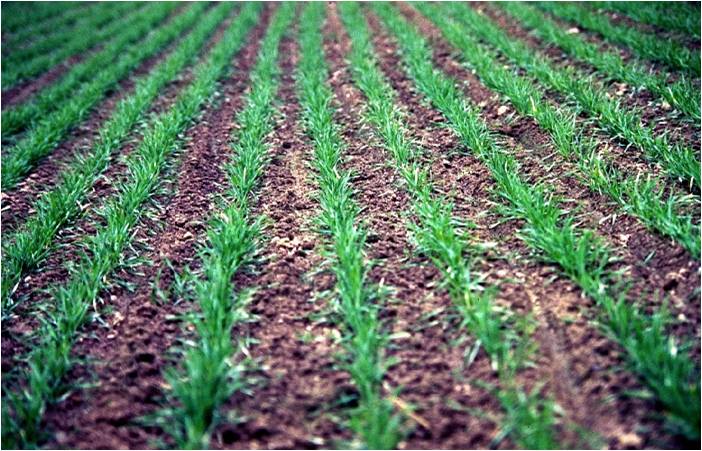Organic farmers have to make hard choices between controlling weeds and protecting soil from erosion. For example, large-scale organic farming relies heavily on tillage. Tilling breaks up the soil to kill weeds and prepare for planting. However, intense tillage can compact soil, cause erosion, and deplete nutrients. As a result, some organic farmers are turning to cover crops for weed control.
Cover crops are planted after harvest as an in-between crop, improving the soil with living roots that protect it from erosion and add nutrients. Cover crops are usually plowed down, but another option is flattening it to form a thick carpet, or mat. They do this with a roller crimper which is a heavy, rolling drum attached to a tractor.
The farmer then uses a no-till planter to plant seeds into the flattened mat for the next season. The new crop grows through the cover crop residue, which helps suppress weeds.
This method, called cover crop-based organic rotational no-till, allows farmers to skip spring tillage and weeding. By simply flattening a cover crop, farmers don’t have to disturb the soil for a new crop. The flattened cover crop suppresses weeds and retains soil moisture.
All new trials come with complications. For example, if you flatten it too late, the cover crop might produce seeds. The result is a weedy cover crop competing with next season’s cash crop. And if you flatten the cover crop too early, it may regrow.
It’s all in the timing. Generally, letting the cover crop grow longer produces the best, if not perfect, results. Without this new tool, farmers have to plow the field multiple times, harrow it, plant it, and do a lot of weeding. The cover crop eliminates much labor time and saves precious diesel fuel. Despite the tricky timing, rolling cover crops to form a mat has a lot of potential.


